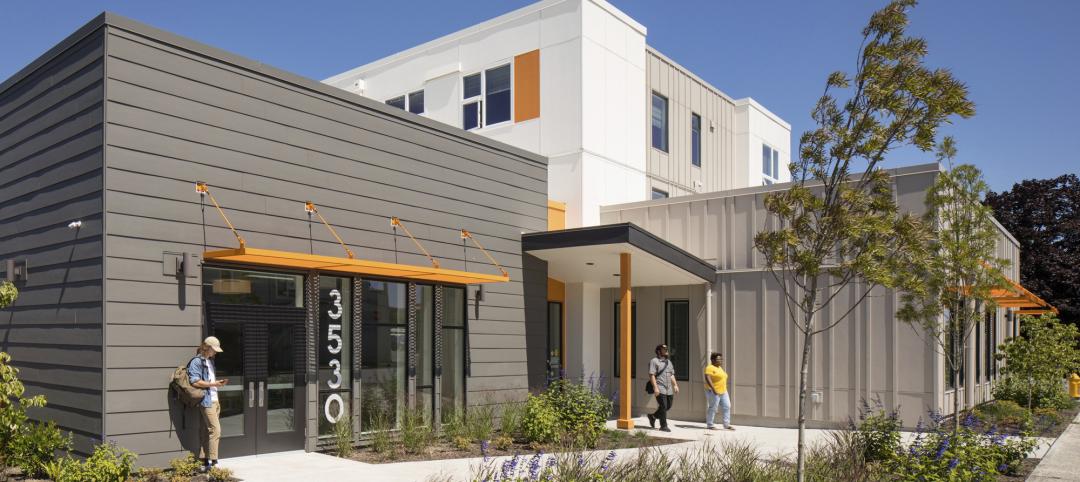In the $90 billion U.S. office construction sector, Class A and Class A+ properties are the darlings of every major metro market. Owners and developers of these amenity-rich, high-performance buildings are competing to lure top-notch companies willing to pay the most lucrative lease rates—and to keep them there long-term.
There’s certainly plenty of money to be made in building and rehabbing Class A office buildings. But what about their less-flashy counterparts, Class B and Class C properties?
A new Urban Land Institute report, researched in partnership with the Rocky Mountain Institute and the Building Owners and Managers Association (BOMA), suggests that there is significant “hidden value” waiting to be unlocked by owners of Class B/C properties—and plenty of work for AEC firms that cater to these segments of the office market.
For myriad reasons, these properties are woefully outdated and in serious need of a tune-up to meet baseline energy efficiency standards. The ULI report found that even the simplest of energy efficiency measures—low- and no-cost tactics such as upgrading general office illumination to LED fixtures, optimizing HVAC schedules and setpoints, performing routine preventative maintenance, and engaging tenants in occupant behavior measures—could net an immediate 15% savings in energy costs.
Larger capital investments—such as improvements to the building envelope and roof system, or installation of high-efficiency building systems, sensors/controls, or solar panels—could slash energy use by 35% or more, with paybacks in the three-year range. “That can reduce a property’s operating expenses by $0.26 to $0.61 per square foot, increase net operating income by 1.9% to 4.3%, and boost property value by approximately $4 to $8 per square foot,” said the authors.
Why haven’t more Class B/C property owners taken steps to improve the energy performance of their buildings? The report pinpoints three primary reasons: limited working capital to pay for project costs, inadequate staff capacity to implement these measures, and a lack of priority versus other business activities.
Furthermore, by successfully instituting a green lease program, owners can recoup a sizable portion of the initial investment, which would further improve the financial outcomes for the property.
If all of this is so elementary, as the report outlines, why haven’t more Class B/C property owners taken steps to improve the energy performance of their buildings? The report pinpoints three primary reasons: limited working capital to pay for project costs, inadequate staff capacity to implement these measures, and a lack of priority versus other business activities.
“Staff working at Class B/C buildings wear multiple hats. Rarely do they have dedicated third-party management or building engineering staff with time to focus on identifying, championing, and implementing energy efficiency efforts,” said the authors.
The report offers a roadmap for getting started.
For a free PDF download of the ULI report, “Unlocking Hidden Value in Class B/C Office Buildings,” visit BDCnetwork.com/ClassBC.
Related Stories
Giants 400 | Aug 22, 2023
2023 Giants 400 Report: Ranking the nation's largest architecture, engineering, and construction firms
A record 552 AEC firms submitted data for BD+C's 2023 Giants 400 Report. The final report includes 137 rankings across 25 building sectors and specialty categories.
Giants 400 | Aug 22, 2023
Top 175 Architecture Firms for 2023
Gensler, HKS, Perkins&Will, Corgan, and Perkins Eastman top the rankings of the nation's largest architecture firms for nonresidential building and multifamily housing work, as reported in Building Design+Construction's 2023 Giants 400 Report.
Affordable Housing | Aug 21, 2023
Essential housing: What’s in a name?
For many in our communities, rising rents and increased demand for housing means they are only one paycheck away from being unhoused. It’s time to stop thinking of affordable housing as a handout and start calling it what it is: Essential Housing.
Adaptive Reuse | Aug 16, 2023
One of New York’s largest office-to-residential conversions kicks off soon
One of New York City’s largest office-to-residential conversions will soon be underway in lower Manhattan. 55 Broad Street, which served as the headquarters for Goldman Sachs from 1967 until 1983, will be reborn as a residence with 571 market rate apartments. The 30-story building will offer a wealth of amenities including a private club, wellness and fitness activities.
Sustainability | Aug 15, 2023
Carbon management platform offers free carbon emissions assessment for NYC buildings
nZero, developer of a real-time carbon accounting and management platform, is offering free carbon emissions assessments for buildings in New York City. The offer is intended to help building owners prepare for the city’s upcoming Local Law 97 reporting requirements and compliance. This law will soon assess monetary fines for buildings with emissions that are in non-compliance.
Office Buildings | Aug 15, 2023
Amount of office space in U.S. is declining for the first time, says JLL
In what is likely a historic first, the amount of office space in the U.S. is forecast to decline in 2023, according to Jones Lang LaSalle. This would be the first net decline according to data going back to 2000, JLL says, and it’s likely the first decline ever.
Office Buildings | Aug 14, 2023
The programmatic evolution of the lobby
Ian Reves, Managing Director for IA's Atlanta studio, shares how design can shape a lobby into an office mainstay.
Office Buildings | Aug 10, 2023
Bjarke Ingels Group and Skanska to deliver 1550 on the Green, one of the most sustainable buildings in Texas
In downtown Houston, Skanska USA’s 1550 on the Green, a 28-story, 375,000-sf office tower, aims to be one of Texas’ most sustainable buildings. The $225 million project has deployed various sustainable building materials, such as less carbon-intensive cement, to target 60% reduced embodied carbon.
Government Buildings | Aug 7, 2023
Nearly $1 billion earmarked for energy efficiency upgrades to federal buildings
The U.S. General Services Administration (GSA) recently announced plans to use $975 million in Inflation Reduction Act funding for energy efficiency and clean energy upgrades to federal buildings across the country. The investment will impact about 40 million sf, or about 20% of GSA’s federal buildings portfolio.
Market Data | Aug 1, 2023
Nonresidential construction spending increases slightly in June
National nonresidential construction spending increased 0.1% in June, according to an Associated Builders and Contractors analysis of data published today by the U.S. Census Bureau. Spending is up 18% over the past 12 months. On a seasonally adjusted annualized basis, nonresidential spending totaled $1.07 trillion in June.

















